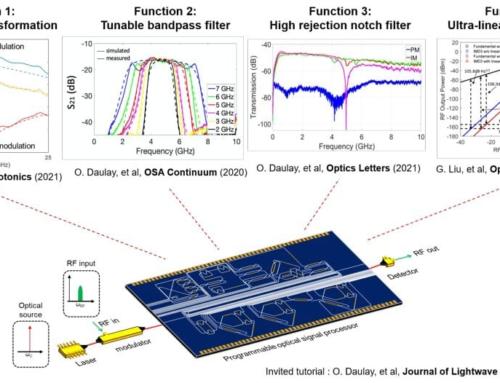As mobile phone services grew in popularity and more cellular masts were being put up where people live and work, protests against cellphone towers also began to grow.
Some were concerned about how unsightly the towers were, while others campaigned against towers due to warnings that cellular networks emit potentially deadly electromagnetic radiation.
In South Africa, we saw such a protest in 2010, when the residents of Craigavon campaigned against the erection of an iBurst tower in the area. There were similar issues when 4G was starting to roll out in South Africa.
Now, with 5G networks coming online around the world, a fresh health panic is sweeping the Internet. The misinformation around 5G has resulted in people indiscriminately attacking and burning down cellular masts — even ones that don’t have any 5G equipment installed.
However, a cellphone exposes you to far more radiation than a cellular tower does. This is because of a principle in physics called the inverse-square law — the further you move away from a source of radiation, the lower the amount of radiation you are exposed to.
If you double the distance between you and a source of radiation, you quarter the power density or amount radiation that you are exposed to. In practice, this principle causes the strength of the radiation to drop off very quickly as you move away from the source of the radiation.
During an earlier investigation, MyBroadband found that less than 1.5 metres away from a Wi-Fi router or 1 metre away from a cellphone, the electromagnetic field from the device could no longer be detected.
To better examine this principle, we took several sets of measurements using our RS PRO IM-195 three-axis RF field emission detector near a cellular mast, and close to 4G and 5G cellphones.
4G smartphone performing speed test – 0.57 W/m2
Measurements taken on top of an LG V50 ThinQ 5G smartphone, performing a speed test while connected to the MTN 4G network, went as high as 565 mW/m2 — 141-times that of the power density measured within line of sight of the cellphone tower.
5G smartphone performing speed test — 0.15 W/m2
Measurements taken on top of an LG V50 ThinQ 5G smartphone, performing a speed test while connected to the Vodacom 5G network, went as high as 155 mW/m2 — 38-times that of the power density measured within line of sight of the cellphone tower.
4G smartphone receiving phone call — 0.16 W/m2
While receiving a phone call, the LG V50 ThinQ 5G smartphone caused power density measurements as high as 16 mW/m2. It was also interesting to note that when the call finished, the power density measurement briefly spiked to 789 mW/m2.
5G smartphone receiving phone call — 0.03 W/m2
Receiving a phone call while connected to the Vodacom 5G network resulted in power density measurements of 26 mW/m2 on the LG V50 ThinQ 5G smartphone. Even this low maximum was 7.5-times greater than that of the power density measured within line of sight of the cellphone tower.
Line of sight to a 4G and 5G tower — 0.004 W/m2
Measurements were taken at around 5m from the base of the cellphone tower with 4G and 5G equipment installed, and again at around 25m from the tower. Our distance away from the tower did not appear to make a material difference in the reading on the RF field emission detector, which was between 2 mW/m2 and 4 mW/m2.
This suggests that the radiation from the tower was not significant enough for the detector to pick it up. To be conservative, we will use a power density of 4 mW/m2 for the radiation from the tower in the comparison below.
Summary of measurements
The following table compares the measurements we obtained using the RF field emission detector.
| Measurement | Cellular tower | 4G smartphone | 5G smartphone |
|---|---|---|---|
| Phone call | 0.004 W/m2 | 0.16307 W/m2 (40× greater) | 0.02614 W/m2 (6.5× greater) |
| Speed test | 0.004 W/m2 | 0.5653 W/m2 (141× greater) | 0.15469 W/m2 (38 × greater) |
| The 4 mW/m2 power density given for the cellular tower is a conservative measure. The real value is likely even lower. | |||
Safe power thresholds for non-ionising radiation
The current scientific understanding is that below certain power thresholds, electromagnetic waves up to the visible light spectrum are unlikely to be harmful to human health. Electromagnetic fields that run at frequencies higher than that of ultraviolet light are known as ionising. Ionising electromagnetic radiation, such as that caused by x-rays and gamma rays, can damage DNA and are known to cause cancers.
Non-ionising radiation does not cause DNA damage as ionising radiation does, but at high enough power levels it may be harmful to human health. It is for this reason the government regulators around the world set limits on the amount of power that wireless transmitters are allowed to emit.
The World Health Organisation collated the exposure limits from various countries for radiofrequency electromagnetic fields in 2017, and a common lower limit for electric fields was 41 V/m at 900MHz.
Similarly, the most common power density exposure limit for 900MHz signals among the countries the WHO surveyed was 4.5 W/m2. These limits are in-line with guidelines published by the International Commission on Non-Ionizing Radiation Protection (ICNIRP). In its latest guidelines, which were published in March 2020, the ICNIRP stipulated the following thresholds for the frequency bands of interest to us:
| Frequency range | Electric field strength Volt per metre (V/m) |
Power density Watt per square metre (W/m2) |
|---|---|---|
| 400MHz–2000MHz | 1.375×frequency0.5 V/m | frequency÷200 W/m2 |
| >2GHz–300GHz | – | 10 W/m2 |
It is worth noting that the ICNIRP guidelines given above are reference levels intended to be averaged over 30 min across the whole body.
These limits are much higher when averaging the exposure over smaller body regions, such as the head, torso, or limbs. For frequencies between 2GHz and 6GHz, the ICNIRP gives a guideline of 40 W/m2.
All of the measurements we took of radiation from cellular masts and mobile phones were below these levels.
Specific Absorption Rate
It is important to note that measuring the electromagnetic field strength and power density as we have done here is not how regulators measure the radiation from smartphones.
They use a measure known as Specific Absorption Rate (SAR). However, measuring the SAR from a mobile phone requires a laboratory with specialised equipment.
Many countries require that device manufacturers publish SAR test results and, because of these regulatory requirements, information about the electromagnetic fields radiated by cellphones can be found on the websites of companies like Samsung and LG.
The ICNIRP guidelines set the limit for SAR at 2 W/kg at the head or on the body. This is with the radiation averaged over six minutes and over a 10-gram sample cubic mass.
For the LG V50 ThinQ 5G used in this test, the highest SAR value for use at the ear is 0.243 W/kg and when worn on the body it is 1.497 W/kg. Smartphone manufacturers note that these SAR measurements are the highest values. Depending on factors such as the signal strength of the network you are connecting to, the SAR actual values will usually be well below the published measurements.
“This is because, for purposes of system efficiency and to minimize interference on the network, the operating power of your mobile device is automatically decreased when full power is not needed for the call,” Samsung states on its website.
“The lower the power output of the device, the lower its SAR value.”








